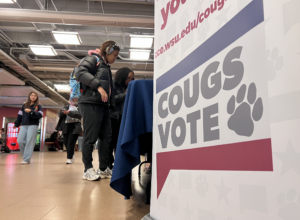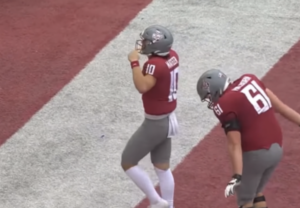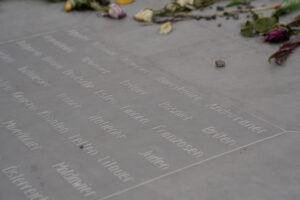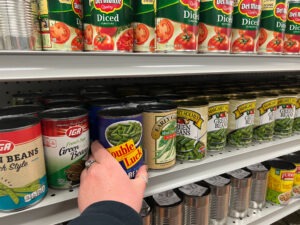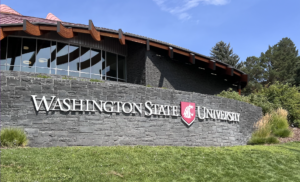PULLMAN – Colton High School graduates around 10 seniors each year in the spring, but that doesn’t mean that certified athletic trainer, Kai Seshiki, has an easy job.
Seshiki is one of a handful of certified athletic trainers from Pullman Regional Hospital who are contracted by four high schools around the Palouse region (Colton, Garfield-Palouse, Potlatch and Pullman school districts) to ensure the health and safety of more than 750 student-athletes. The high schools have a three-year commitment for full-service athletic training benefits, specific to each school’s needs.
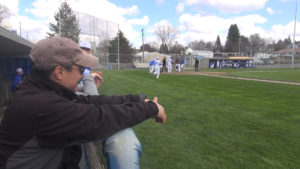
Seshiki watches Colton High School athletes take the field for a baseball game against Orofino High School.
Staff at the Orthopedic Center of Excellence saw a need in the community for providing consistent and efficient prevention of and treatment for sports injuries in small-town high schools. Scott Adams, the chief executive officer of Pullman Regional Hospital, said that the relationship between the hospital and the high schools has built a better community and established a strong bond with the people it serves.
“The athletic trainers at each of these communities are beloved by the students and parents. They are a part of the community and they embrace them and really support them,” Adams said.
For Colton specifically, the regional high school athletic training program services for student-athletes during practices, games and camps. In addition to overseeing athletic events, trainers provide treatment to injured athletes at Pullman Regional Hospital’s outpatient physical therapy clinic at no additional cost.
The cost of the program for each school is on a sliding scale based on student population. The program relies on community contributions to fund half the program. The cost of the services has far surpassed the contracted rates for school districts, but Rueben Mayes, chief development officer of the Pullman Regional Hospital Foundation, said he thinks the benefit for high school athletes is priceless.
“One of the takeaways for me is to see moms’ and dad’s appreciation of having a full-time trainer and the orthopedic surgeons providing care right there on the field and providing after-injury care and recovery. That has been huge for them,” Mayes said.
Mayes went to a small high school in North Battleford, Saskatchewan, and played football at Washington State University from 1982-1985. He loves raising money for the program because it relates to him at a personal level.
“For me, personally, being a former high school athlete and having that appreciation of having consultation from a trainer and understanding what that really means, brings it all home for me coming from a small town,” Mayes said.
According to the Washington Interscholastic Activities Association, Colton High School is classified in the smallest high school athletic division (1B) based on enrollment, but Seshiki still sees 10 to 30 kids a week depending on the sports season.
Seshiki watched over the Colton Wildcat athletes who went on to win the 2019 1B State Championship in girls basketball. When looking back on the extraordinary season, Seshiki was most happy about the trust he developed with both his athletes and their parents and keeping the kids safe.
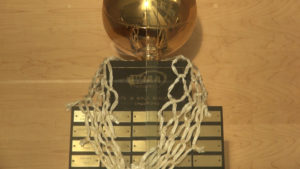
The State 1B Girls’ Basketball Champions trophy in a trophy case at Colton High School.
“If [the parents] trust me to watch over them, they’re giving you an honor and a privilege, and I need to do the best work that I can to make sure that I take care of them well,” Seshiki said. “Mom and dad know that my primary objective is not a win or a loss, but the health of their athletes.”
Peter Schultheis graduated from Colton High School in 2017 and said that having a certified trainer watching over every practice and game made him feel more comfortable as a high school athlete.
“I didn’t have the idea of getting hurt and not having anybody to help me in the back of my mind, so it was definitely a help to have him around,” Schultheis said.
Schultheis also said that he was one of the kids who would visit with Seshiki more than once a week to check up on any injuries.
“I bet I saw him just as often as I did my teachers or even my family for that matter,” Schultheis said.
Seshiki said the best aspect of the Regional High School Athletic Training Program is the access he has to doctors with expertise in athletic injuries. Seshiki is able to bypass the emergency room or a general medical practitioner, which may take days, and instead, directly ask the surgeons at Pullman Regional Hospital, Dr. Ed Tingstad and Dr. Steve Pennington, about an injury to get athletes the care they need to get back on the field.
“I can text one of these amazing surgeons and say, ‘I am really concerned about this ankle, can you help me with this?’ and the answer is always yes every time,” Seshiki said.
Whether it’s the trainer at rural Potlatch High School in Idaho, or Kai Seshiki helping the royal blue and white Wildcats of Colton High School, the regional certified athletic trainers of the Pullman Regional Hospital are making a difference by protecting athletes in these tight-knit communities.
